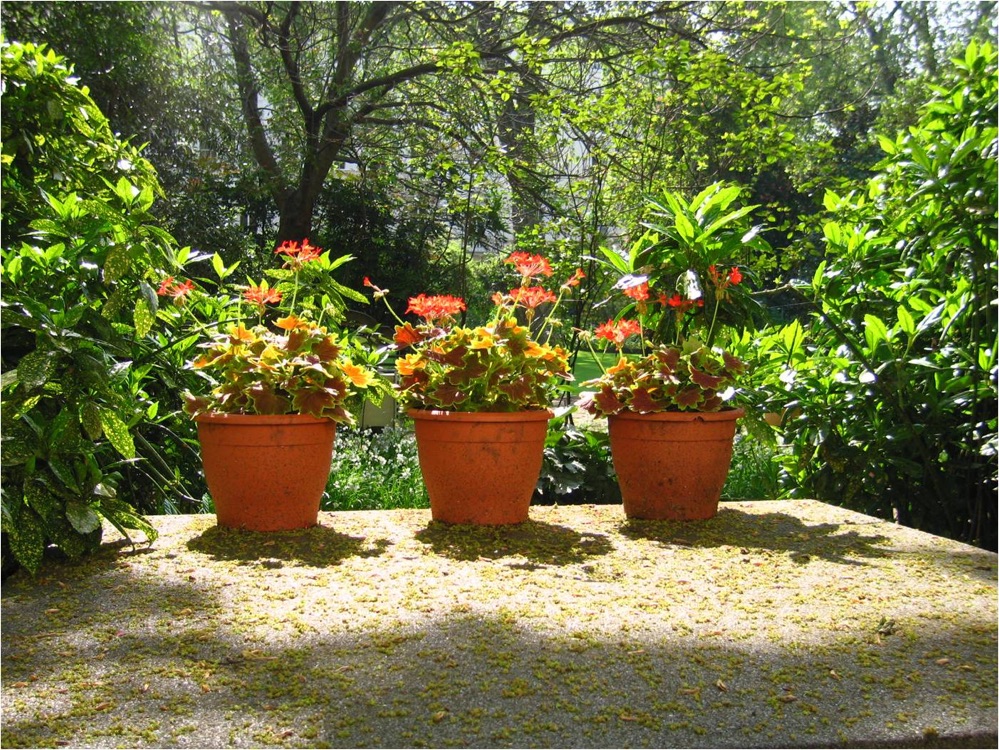Who knows why things always seem to look better when they are arranged in threes.

I always tell people it has to do with Fibonacci numbers. Fibonacci was the 12th century Italian mathematician who figured out that a certain sequence of numbers somehow mirrors patterns that happen naturally in nature.
The numbers are 1, 1, 2, 3, 5, 8, 13, 21, 34, 55, 89, 144 and on and on. You can see how the sequence is arrived at – the next number is the sum of the two preceding ones.
When you take these numbers and use them to create a progressive spiral, you find that the shape of the spiral matches a lot of natural phenomena, such as growth patterns in plants, pinecones, galaxies, fruits and vegetables, shells and even the petal development and composition of many plants.

Fascinating as all this is, especially to mathematicians, I find it all boils down to the fact that pots in the garden always seem to look better when arranged in threes or fives and bulb plantings always seem much more natural when grouped in odd numbers, such Fibonacci’s 5, 13 and 21.
Now you are probably thinking, well what about 1, 2 and 8, aren’t they Fibonacci numbers, too. To which I say, yes, but let’s not overthink it.
Here are some other examples of how good pots can look grouped in threes.
swhysall@hotmail.com




























I think you have observed some very interesting details , appreciate it for the post. dcebeadbedaddked
Comments are closed.